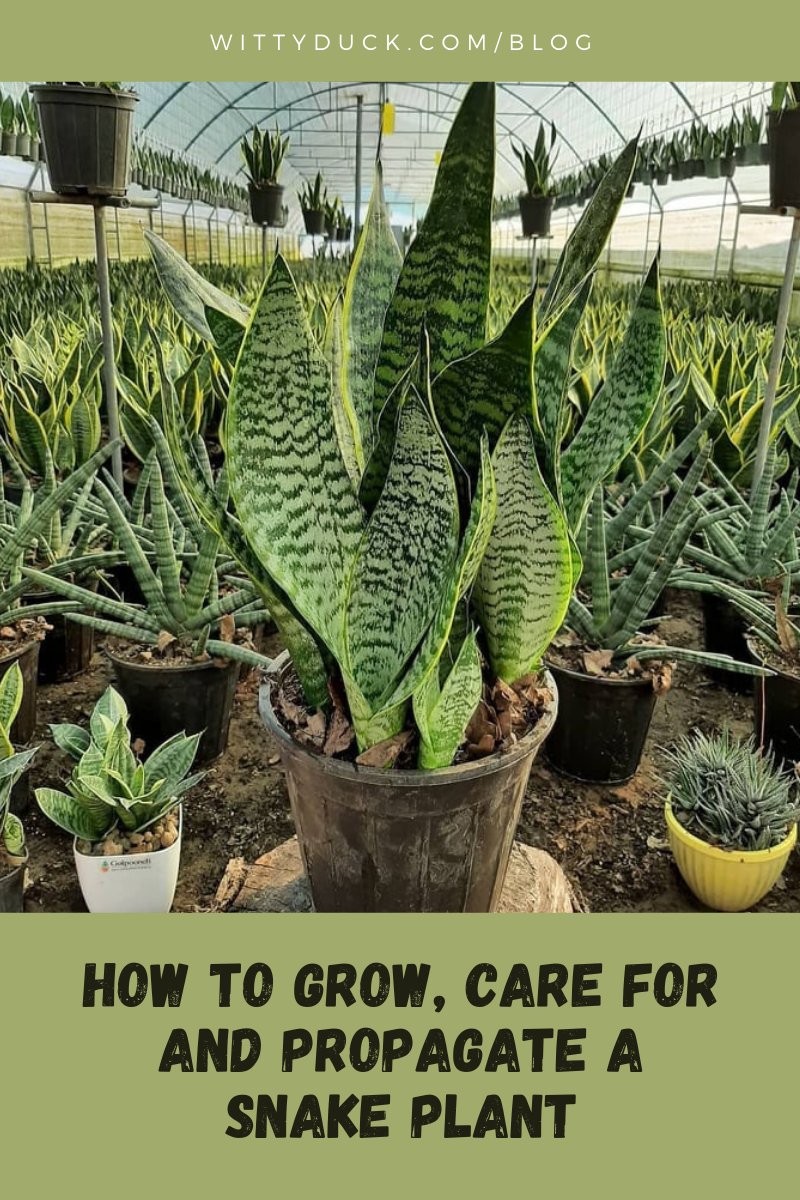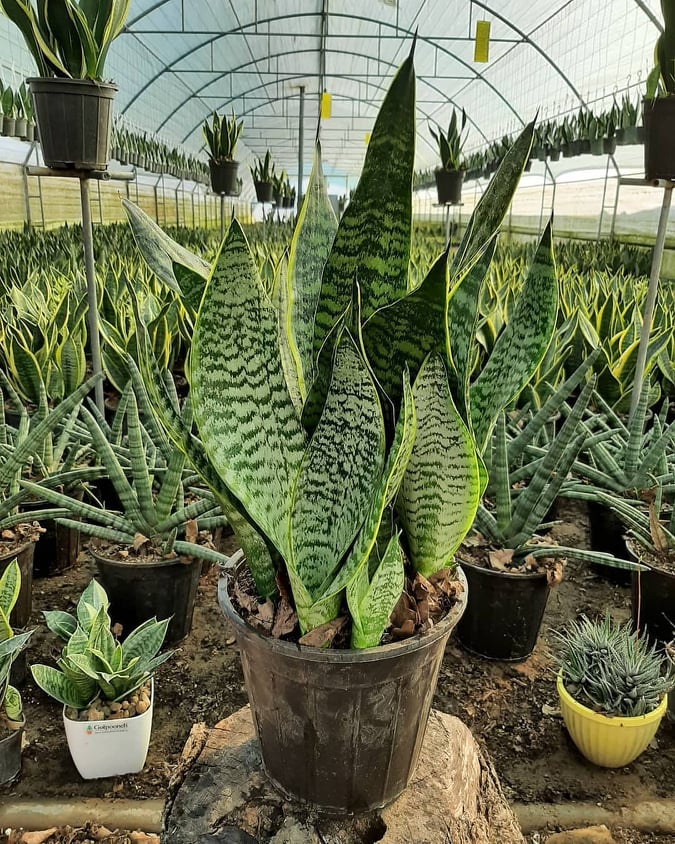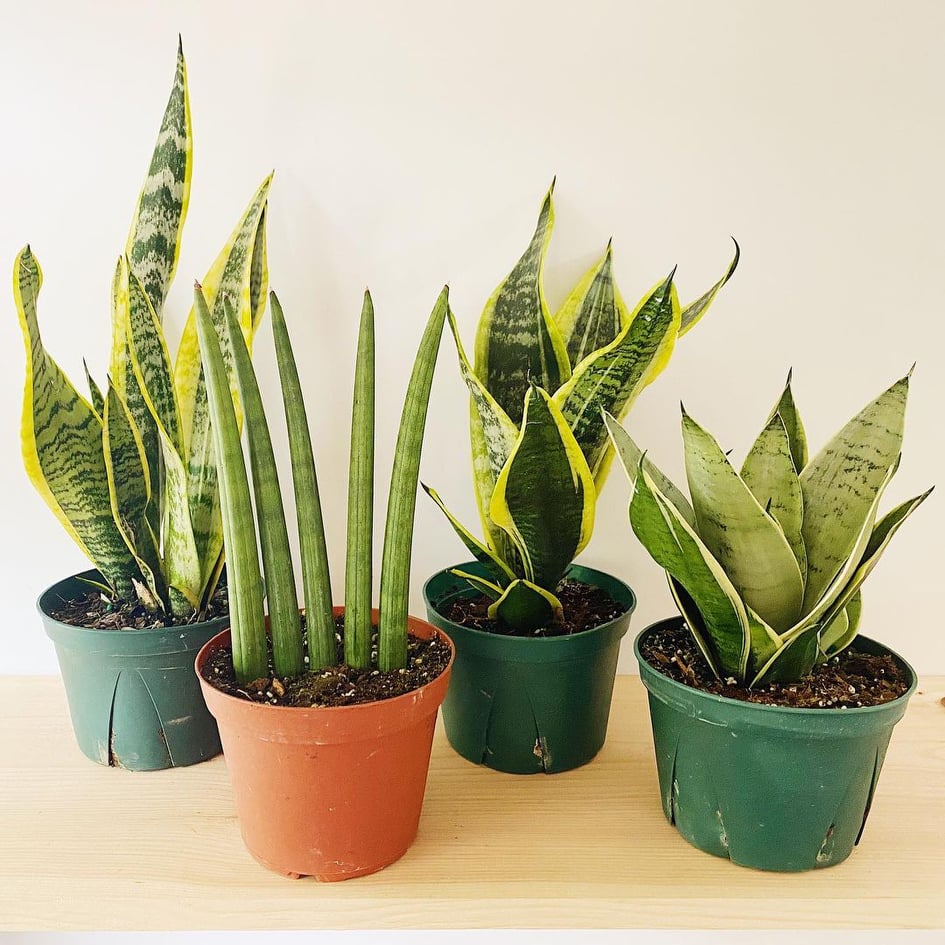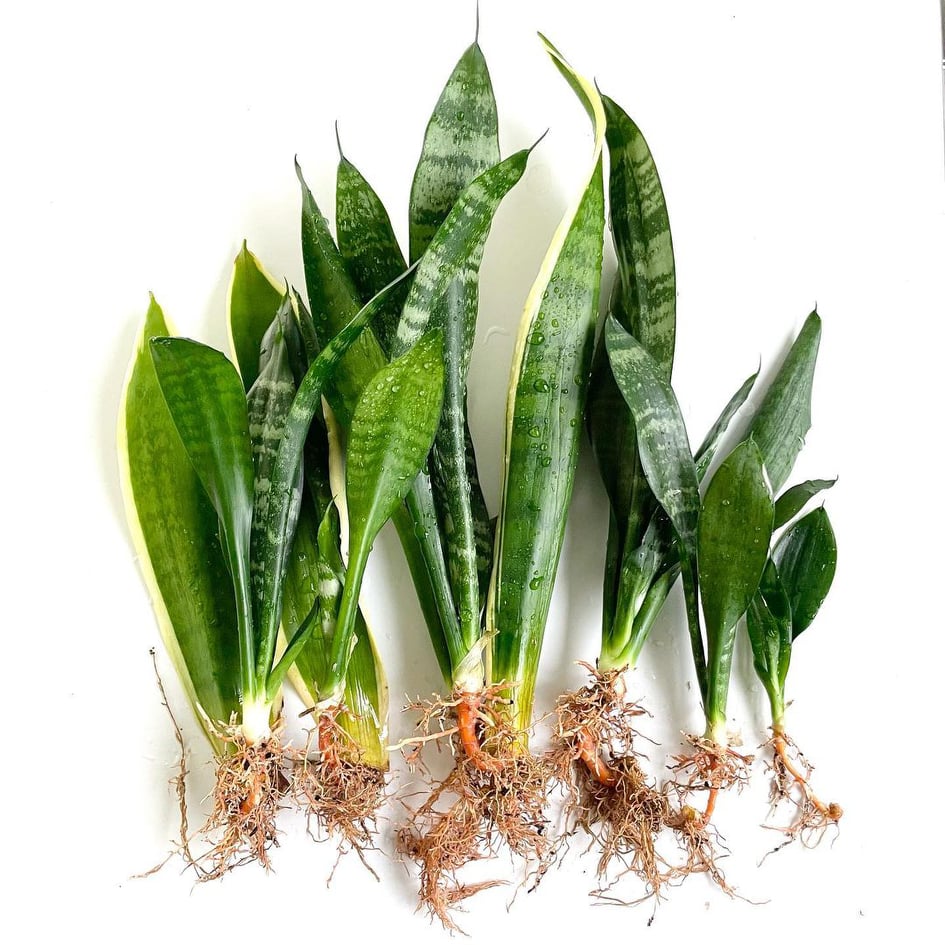Popularly known as Snake Plant, with yellow striped leaves, these are almost found in all households. One of the easiest houseplants to take care of. Sansevieria trifasciata is known by its biological name and commonly called Saint George’s sword, Mother-in-Law’s Tongue, Viper’s Bowstring, etc they vary between 6-8 feet in length. They can grow indoors and outdoors, with little to no maintenance. Due to their crowded root system, they are best suitable for smaller pots. They prefer remaining dry and should not be misted.

Snake plants benefit us in many ways including improving health and well-being. Also believed to have the blessings of eight gods ( long life, prosperity, intelligence, beauty, art, poetry, health, and strength ) who grow this plant, it is treasured in China. Joint studies by the University of Georgia and Yonsei University, snake plant has a demonstrated ability to remove formaldehyde and benzene from the air.
Biological name – Sansevieria trifasciata
Common name – snake plant, Saint George’s sword, mother-in-law’s tongue, viper’s bowstring
Kingdom – Plantae
Family – Asparagaceae
Toxicity – Toxic to dogs, toxic to cats, toxic to humans
Height – 6-8 feet
Sun exposure – can grow in every condition
Bloom Time – Spring
Soil Type – Fast-draining, sandier soil
Snake Plant Benefits
Snake plant benefits are very well known to everyone. There are various benefits that we get from the snake plants some of them are:-
1. Purify the air
It emits oxygen at night that helps you sleep better. Also, according to the NASA clean air study, snake plants were found to be the best air purifiers. They clean the air from harmful chemicals and leaves a cleaner air for you to breathe. Remove toxic air pollutants like CO2, benzene, formaldehyde, xylene, and toluene. They act as an effective defense against airborne allergies. Clean air means good sleep and healthy life.
2. Low maintenance
One of the best low maintenance houseplants in the world. It promises to thrive in full sun, in full shade, in lack of water, and your all other kinds of mistakes and neglect. Basically, it thrives on neglect.
3. Unique look
Gives attractiveness and uniqueness. The unsloped, thick, and tall foliage without stems look so artificial, and on top of it, the shades of green, yellow or gray with the horizontal stripes make it a desiring indoor plant.
4. Propagate easily
Having just one snake plant? Not an issue. These plants have the capability of propagating easily. You can have multiple plants from one single plant and also works great as a gift idea.
Snake plant care

Although snake plants don’t need much attention there are some factors that you must keep in mind while growing a snake plant. Snake plant care isn’t a tough job but below but the few essentials are listed below.
1. Light
- Can grow in both bright and low light
- Snake plants prefer bright, indirect light and can even tolerate some direct sunlight.( harsh direct sunlight burns their leaves)
- They also grow well (but more slowly) in shady corners and other low-light areas of the home
2. Soil
- Prefer a loose, well-drained mix
- Grows well in sandy soil
- Proper drainage must be done
- An all-purpose cactus potting soil is a good choice.
3. Watering
- Very less, once in 2 weeks or when soil is dry.
- Sansevieria likes to dry out completely between waterings.
- The most common mistake made with these plants is overwatering.
- Even if the plant is placed in ample bright indirect light, you won’t need to water it more than once every 10 days.
- Overwatering can cause root rotting, eventually, the plant will die.
4. Temperature
- The ideal temperature must be between 70 – 90 degree Fahrenheit
- They suffer below 50 degrees Fahrenheit
5. Humidity
- Prefer warm conditions
6. Fertilizer
- No need for fertilizing or you can fertilize when growing season or springtime.
7. Repotting
- These are usually slow growers and rarely need repotting. Spring is the best season for repotting.
Varieties of Snake Plants
Being grown in every corner of the world these plants come in with a lot of variety. Some common varieties are listed below.

1. Sansevieria desertii
This is a slow-growing succulent with rough, cylindrical, downward-curving leaves that arise from an underground rhizome. Also known as rhino plants, they can grow to a height of 12 inches.
2. Sansevieria trifasciata Bantel’s Sensation
A striking variety of the foolproof Snake Plant, boasting distinctive white vertical striping on its thinner-than-usual leaves. Can grow up to a height of 3 feet, these are also called the white sansevieria.
3. Sansevieria trifasciata ‘Twist’
The twisted foliage that emerges from the base gives the effect of a bird’s nest. Growing as tall as 15 inches these plants have bright gold and green leaves with yellow variegated edges.
4. Sansevieria trifasciata ‘Laurentii’
A native of West Africa from Nigeria east to the Congo. It is an erect evergreen perennial with strap-shaped, fleshy, sharply-pointed, deep green leaves and creamy yellow leaf margins. They propagate by leaf cuttings.
5. Sansevieria cylindrica
A native of Angola, this Sansevieria cylindrica has all the ease and durability of the snake plant and the appeal of lucky bamboo. Consisting of round, stiff leaves reaching several feet in length and forming an arch outward from a central crown.
6. Sansevieria trifasciata ‘Hahnii’
This variety of evergreen snake plants is grown for their foliage. It is a stemless perennial succulent plant with dark green leaves with clear horizontal bands, arranged in an attractive rosette. The leaves form a cluster that resembles the bird’s nest.
Snake Plant Propagation

Snake plant propagation is the easiest.
- Snake plant in favorable conditions gives off tiny snake plant baby pups ( small rhizome structures attached with mother plant) and these pups when mature can be separated out and can be planted as individual plants
- Leaf propagation can be done in water or direct rooting in the soil.
They can also be propagated by cutting, but why rely on these methods when the plant itself can produce many other plants.
Recommended Read:
Spider Plant Care: How to Propagate and Tips on How to Care



